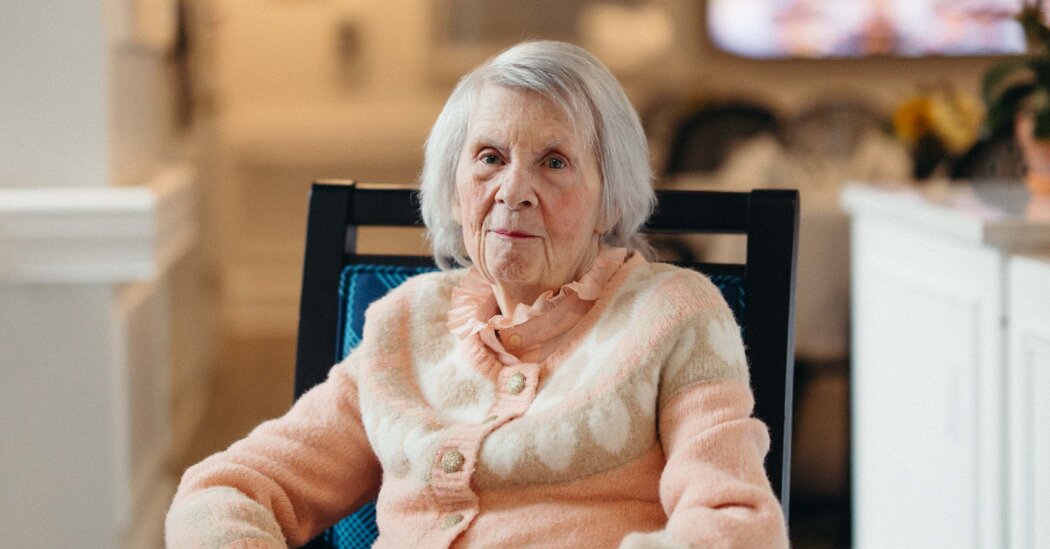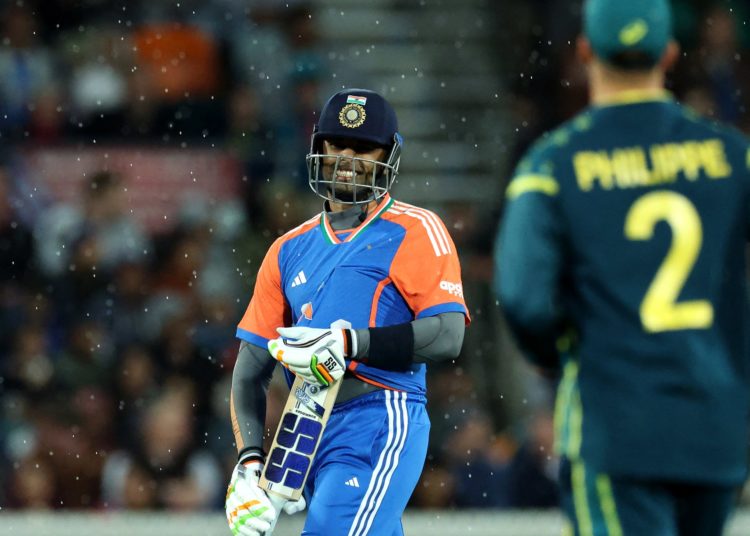Kathy Doyle fell on the street in Manhattan several times over the years. Usually, she’d end up at Lenox Hill Hospital, disoriented and upset. Then she had a stroke. She kept falling, often injuring herself and scaring her family.
So in 2023, Ms. Doyle, now 81, moved to a luxury assisted-living home a few blocks away from her longtime home on the Upper East Side. At the Bristal, residents can opt in to use a high-tech fall-detection system that employs a motion sensor to monitor gait, posture and patterns of movement that could portend a fall. If a resident does fall, it alerts building staff immediately.
“This system has been a godsend for Kathy,” said Ms. Doyle’s sister, Patricia Doherty. “I think she had one fall in the past year. Before that, it was every four to six weeks.”
Falls can be crippling, or worse: They’re the leading cause of injury-related deaths for people age 65 and over, according to the Centers for Disease Control and Prevention. “It is more than just a broken bone,” said Dr. Jing Wang, dean of the Florida State University College of Nursing, who specializes in the use of technology for aging adults. “A hospitalization might result in surgery and higher risks of infection for this frail population. These 80-plus seniors can never go back to their life before the fall.”
Today’s anti-fall technology has come a long way from the emergency alert systems of the late 1980s, when Mrs. Fletcher uttered her iconic TV-commercial cry: “I’ve fallen and I can’t get up!” That kind of pendant or bracelet, or even a voice-activated system, is useless for someone who is injured, unconscious or too weak to trigger it.
Now, the A.I. technology is being rolled out in some of New York City’s high-end senior living facilities, as well as nationwide. (These facilities don’t come cheap: At the Bristal, rates start at $14,500 a month for a studio.) The sensors are typically mounted high on the wall and capture the movements of the person or people inside, sending real-time information to staff members — meaning the residents don’t have to do anything to summon help.
Using predictive analytics, the sensor learns the trends that can predict a fall, Dr. Wang said.
Because privacy is an issue, the sensors display a kind of silhouetted figure. “You can see a form moving, but you can’t see any details,” said Kyra Sosnow, vice president of information systems for the Bristal, which uses a fall-detection system from Foresite Healthcare. “When a fall is detected, the staff is able to see the clip of the fall right away and respond.”
The system also helps identify fall risk using mattress sensors to monitor vital signs like respiration and heart rate, and stores data to keep a record of an individual’s regular movements as a way to identify aberrations. Designated staff members receive daily health information showing statistically significant changes.
At the Bristal, falls have declined by 40 percent since the detection system was introduced several years ago, Ms. Sosnow said. In one case, a woman with a history of falling at home took a tumble within a week of arrival. The system showed she was getting little sleep, so a doctor was able to prescribe something to help.
Wearable call devices, some of which have accelerometers (also found in many cellphones and fitness watches) to detect a fall, are still in use. So are bathroom pull cords. On occasion, the Bristal staff will ask a resident who fell why they didn’t press their pendant.
“People can be discombobulated or confused, or they say they didn’t want to bother anyone,” Ms. Sosnow said. “I just want to hug these residents. What do you mean you didn’t want to bother us? Are you kidding? It’s times like these that a system with the ability to communicate when a resident can’t or won’t is so extraordinary.”
Elderly residents tend to have set activity patterns. So changes in routine — as identified by A.I. — can indicate a fall risk, as can changes in respiration or sleep, said Mark Schmidt, vice president of client and clinical operations at Foresite Healthcare.
“We have several examples where their blood pressure goes too low, their gait slows down, the blood pressure medications get changed and they are walking faster again,” Mr. Schmidt said. A change in gait could also indicate a strength or balance issue, which could be helped with physical therapy.
“The system is not there to replace a person,” he said. “The system will not hold someone’s hand when they need their hand held, but it will identify changes that the human eye can’t see. What the system can say is that there was a four-centimeter decrease in their stride length, which has a significant impact on their fall risk.”
Another Upper East Side senior facility, Inspir Carnegie Hill, uses a sensor system called SafelyYou, which shows falls that could otherwise go unwitnessed, said Shane Herlet, chief operating officer of Inspir’s parent company, Maplewood Senior Living.
“We could have a resident who fell, hit their head and got back up with no visible injury, and hours later there is abnormal behavior and we don’t know what happened,” Mr. Herlet said. Using the fall-detection system, “we can see what actually occurred.”
He continued: “Or it might not be much of a fall. Someone could be sliding off their chair. We know that only because of the technology.”
He acknowledged that not every fall is predictable or preventable. Still, he said, “what’s been incredible to me — as an old-school operator who has seen a lot of things come and go — is the immediate impact that this technology has brought by reducing sendouts to the hospital.”
An early pioneer of A.I. fall detection was TigerPlace, an aging-in-place facility in Columbia, Mo., that is operated in part by the University of Missouri’s Sinclair School of Nursing. Since opening in 2004, it has functioned as a testing ground for “passive monitoring technology.” According to one 2015 TigerPlace study, 83- and 84-year-old residents with room sensors had an average length of stay of 4.3 years; those without stayed an average of 2.6 years.
In an attempt to balance privacy and safety, several states, including New York, have passed laws governing electronic monitoring in assisted-living facilities, generally requiring a person’s consent. (Nursing homes have far more regulation than assisted-living facilities, with evidence from monitoring devices sometimes used in cases of elder abuse.)
“Whether they show a video image or merely a silhouette, these monitoring technologies can reveal intimate details of a person’s life: what they do, when they do it, and how they do it,” said Nina A. Kohn, a law professor at Syracuse University who specializes in elder law. “Imagine your landlord or your children watching you, or a stick-figure version of you, in an intimate moment.”
Sometimes the technology is deployed without a resident’s informed consent, she said. Often, relatives are the ones who promote its use. A resident may feel pressured to agree.
Technologies to enhance privacy are coming. At least one new company, Butlr, has started offering ceiling-mounted heat sensors, using only dots and blocks of color that don’t even look human.
Different interventions might be appropriate for different people, depending on their health and cognition, Ms. Kohn said: “Monitoring may not feel at all benevolent to the older adult.”
The post In Senior Homes, A.I. Technology Is Sensing Falls Before They Happen appeared first on New York Times.




